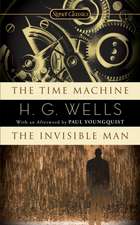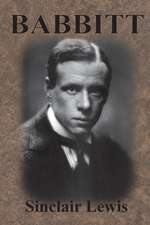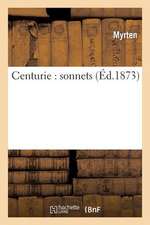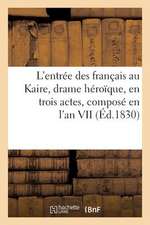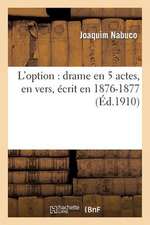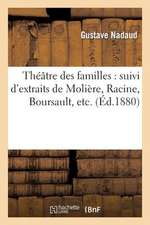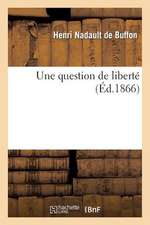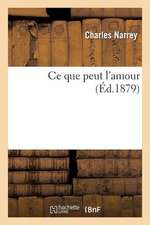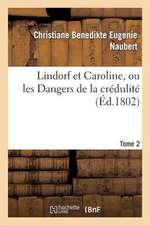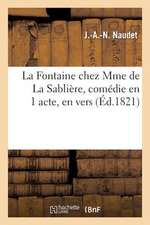Main Street: The Epic of Kings
Autor Sinclair Lewisen Limba Engleză Paperback – 31 dec 2007
| Toate formatele și edițiile | Preț | Express |
|---|---|---|
| Paperback (16) | 29.61 lei 3-4 săpt. | +16.94 lei 7-13 zile |
| Bantam Classics – 29 feb 1996 | 29.61 lei 3-4 săpt. | +16.94 lei 7-13 zile |
| Signet Classics – 31 mai 2008 | 48.44 lei 3-5 săpt. | |
| Alma Books COMMIS – mai 2023 | 52.75 lei 3-5 săpt. | +14.41 lei 7-13 zile |
| CREATESPACE – | 71.60 lei 3-5 săpt. | |
| Mint Editions – feb 2021 | 111.94 lei 3-5 săpt. | |
| Penguin Books – 30 sep 1995 | 115.01 lei 3-5 săpt. | |
| Iap - Information Age Pub. Inc. – 31 iul 2009 | 116.16 lei 3-5 săpt. | |
| CREATESPACE – | 118.43 lei 3-5 săpt. | |
| CREATESPACE – | 132.69 lei 3-5 săpt. | |
| – | 136.04 lei 3-5 săpt. | |
| CreateSpace Independent Publishing Platform – | 137.39 lei 3-5 săpt. | |
| Digireads.com – 31 dec 2007 | 94.75 lei 6-8 săpt. | |
| Blurb – 6 feb 2019 | 142.94 lei 39-44 zile | |
| Echo Library – 31 dec 2005 | 153.80 lei 39-44 zile | |
| Book Jungle – 7 noi 2007 | 198.46 lei 6-8 săpt. | |
| Thomson Press – 14 mar 2007 | 277.64 lei 6-8 săpt. | |
| Hardback (2) | 165.78 lei 3-5 săpt. | |
| Mint Editions – 16 feb 2021 | 165.78 lei 3-5 săpt. | |
| HarperCollins Publishers – 30 oct 1989 | 221.76 lei 3-5 săpt. |
Preț: 94.75 lei
Nou
Puncte Express: 142
Preț estimativ în valută:
18.13€ • 18.89$ • 15.01£
18.13€ • 18.89$ • 15.01£
Carte tipărită la comandă
Livrare economică 03-17 aprilie
Preluare comenzi: 021 569.72.76
Specificații
ISBN-13: 9781420930924
ISBN-10: 1420930923
Pagini: 288
Dimensiuni: 152 x 229 x 17 mm
Greutate: 0.43 kg
Editura: Digireads.com
ISBN-10: 1420930923
Pagini: 288
Dimensiuni: 152 x 229 x 17 mm
Greutate: 0.43 kg
Editura: Digireads.com
Descriere
Notable for shattering the uniquely American myth of the open, progressive-minded small town, this novel's incisive attack on the provincial mentality stunned a nation that was proud of its new prosperity and power. This edition features a new Introduction. Revised reissue.
Notă biografică
Sinclair Lewis was born in 1885 in Sauk Centre, Minnesota, and graduated from Yale University in 1908. His college career was interrupted by various part-time occupations, including a period working at the Helicon Home Colony, Upton Sinclair’s socialist experiment in New Jersey. He worked for some years as a free lance editor and journalist, during which time he published several minor novels. But with the publication of Main Street (1920), which sold half a million copies, he achieved wide recognition. This was followed by the two novels considered by many to be his finest, Babbitt (1922) and Arrowsmith (1925), which was awarded the Pulitzer Prize in 1926, but declined by Lewis. In 1930, following Elmer Gantry (1927) and Dodsworth (1929), Sinclair Lewis became the first American author to be awarded the Nobel Prize for distinction in world literature. This was the apogee of his literary career, and in the period from Ann Vickers (1933) to the posthumously published World So Wide (1951) Lewis wrote ten novels that reveal the progressive decline of his creative powers. From Main Street to Stockholm, a collection of his letters, was published in 1952, and The Man from Main Street, a collection of essays, in 1953. During his last years Sinclair Lewis wandered extensively in Europe, and after his death in Rome in 1951 his ashes were returned to his birthplace.
Martin Bucco is a professor of English at Colorado State University. He is the author of numerous books, among them The Voluntary Tongue (1957), Frank Waters (1969), Wilbur Daniel Steele (1972), E. W. Howe (1977), René Wellek (1981), Western American Literary Criticism (1984), and Main Street: The Revolt of Carol Kennicott (1993), and the editor of Critical Essays on Sinclair Lewis (1986).
Martin Bucco is a professor of English at Colorado State University. He is the author of numerous books, among them The Voluntary Tongue (1957), Frank Waters (1969), Wilbur Daniel Steele (1972), E. W. Howe (1977), René Wellek (1981), Western American Literary Criticism (1984), and Main Street: The Revolt of Carol Kennicott (1993), and the editor of Critical Essays on Sinclair Lewis (1986).
Extras
Chapter One
ON A hill by the Mississippi where Chippewas camped two generations ago, a girl stood in relief against the cornflower blue of Northern sky. She saw no Indians now; she saw flour-mills and the blinking windows of skyscrapers in Minneapolis and St. Paul. Nor was she thinking of squaws and portages, and the Yankee fur-traders whose shadows were all about her. She was meditating upon walnut fudge, the plays of Brieux, the reasons why heels run over, and the fact that the chemistry instructor had stared at the new coiffure which concealed her ears.
A breeze which had crossed a thousand miles of wheatlands bellied her taffeta skirt in a line so graceful, so full of animation and moving beauty, that the heart of a chance watcher on the lower road tightened to wistfulness over her quality of suspended freedom. She lifted her arms, she leaned back against the wind, her skirt dipped and flared, a lock blew wild. A girl on a hilltop; credulous, plastic, young; drinking the air as she longed to drink life. The eternal aching comedy of expectant youth.
It is Carol Milford, fleeing for an hour from Blodgett College.
The days of pioneering, of lassies in sunbonnets, and bears killed with axes in piney clearings, are deader now than Camelot; and a rebellious girl is the spirit of that bewildered empire called the American Middlewest.
Chapter Two
Blodgett College is on the edge of Minneapolis. It is a bulwark of sound religion. It is still combating the recent heresies of Voltaire, Darwin, and Robert Ingersoll. Pious families in Minnesota, Iowa, Wisconsin, the Dakotas send their children thither, and Blodgett protects them from the wickedness of the universities. But it secretes friendly girls, young men who sing, and one lady instructress who really likes Milton and Carlyle. So the four years which Carol spent at Blodgett were not altogether wasted. The smallness of the school, the fewness of rivals, permitted her to experiment with her perilous versatility. She played tennis, gave chafing-dish parties, took a graduate seminar in the drama, went “twosing,” and joined half a dozen societies for the practise of the arts or the tense stalking of a thing called General Culture.
In her class there were two or three prettier girls but none more eager. She was noticeable equally in the classroom grind and at dances, though out of the three hundred students of Blodgett, scores recited more accurately and dozens Bostoned more smoothly. Every cell of her body was alive—thin wrists, quince-blossom skin, ingénue eyes, black hair.
The other girls in her dormitory marveled at the slightness of her body when they saw her in sheer negligée, or darting out wet from a shower-bath. She seemed then but half as large as they had supposed; a fragile child who must be cloaked with understanding kindness. “Psychic,” the girls whispered, and “spiritual.” Yet so radioactive were her nerves, so adventurous her trust in rather vaguely conceived sweetness and light, that she was more energetic than any of the hulking young women who, with calves bulging in heavy-ribbed woolen stockings beneath decorous blue serge bloomers, thuddingly galloped across the floor of the “gym” in practice for the Blodgett Ladies’ Basket-Ball Team.
Even when she was tired her dark eyes were observant. She did not yet know the immense ability of the world to be casually cruel and proudly dull, but if she should ever learn those dismaying powers, her eyes would never become sullen or heavy or rheumily amorous.
For all her enthusiasms, for all the fondness and the “crushes” which she inspired, Carol’s acquaintances were shy of her. When she was most ardently singing hymns or planning deviltry she yet seemed gently aloof and critical. She was credulous, perhaps; a born hero-worshipper; yet she did question and examine unceasingly. Whatever she might become she would never be static.
Her versatility ensnared her. By turns she hoped to discover that she had an unusual voice, a talent for the piano, the ability to act, to write, to manage organizations. Always she was disappointed, but always she effervesced anew—over the Student Volunteers, who intended to become missionaries, over painting scenery for the dramatic club, over soliciting advertisements for the college magazine.
She was on the peak that Sunday afternoon when she played in chapel. Out of the dusk her violin took up the organ theme, and the candle-light revealed her in a straight golden frock, her arm arched to the bow, her lips serious. Every man fell in love then with religion and Carol.
Throughout Senior year she anxiously related all her experiments and partial successes to a career. Daily, on the library steps or in the hall of the Main Building, the co-eds talked of “What shall we do when we finish college?” Even the girls who knew that they were going to be married pretended to be considering important business positions; even they who knew that they would have to work hinted about fabulous suitors. As for Carol, she was an orphan; her only near relative was a vanilla-flavored sister married to an optician in St. Paul. She had used most of the money from her father’s estate. She was not in love—that is, not often, nor ever long at a time. She would earn her living.
But how she was to earn it, how she was to conquer the world—almost entirely for the world’s own good—she did not see. Most of the girls who were not betrothed meant to be teachers. Of these there were two sorts: careless young women who admitted that they intended to leave the “beastly classroom and grubby children” the minute they had a chance to marry; and studious, sometimes bulbous-browed and pop-eyed maidens who at class prayer-meetings requested God to “guide their feet along the paths of greatest usefulness.” Neither sort tempted Carol. The former seemed insincere (a favorite word of hers at this era). The earnest virgins were, she fancied, as likely to do harm as to do good by their faith in the value of parsing Caesar.
At various times during Senior year Carol finally decided upon studying law, writing motion-pictures scenarios, professional nursing, and marrying an unidentified hero.
Then she found a hobby in sociology.
The sociology instructor was new. He was married, and therefore taboo, but he had come from Boston, he had lived among poets and socialists and Jews and millionaire uplifters at the University Settlement in New York, and he had a beautiful white strong neck. He led a giggling class through the prisons, the charity bureaus, the employment agencies of Minneapolis and St. Paul. Trailing at the end of the line Carol was indignant at the prodding curiosity of the others, their manner of staring at the poor as at a Zoo. She felt herself a great liberator. She put her hand to her mouth, her forefinger and thumb quite painfully pinching her lower lip, and frowned, and enjoyed being aloof.
A classmate named Stewart Snyder, a competent bulky young man in a gray flannel shirt, a rusty black bow tie, and the green-and-purple class cap, grumbled to her as they walked behind the others in the muck of the South St. Paul stockyards, “These college chumps make me tired. They’re so top-lofty. They ought to of worked on the farm, the way I have. These workmen put it all over them.”
“I just love common workmen,” glowed Carol.
“Only you don’t want to forget that common workmen don’t think they’re common!”
“You’re right! I apologize!” Carol’s brows lifted in the astonishment of emotion, in a glory of abasement. Her eyes mothered the world. Stewart Snyder peered at her. He rammed his large red fists into his pockets, he jerked them out, he resolutely got rid of them by clenching his hands behind him, and he stammered:
“I know. You get people. Most of these darn co-eds— Say, Carol, you could do a lot for people.”
“How?”
“Oh—oh well—you know—sympathy and everything—if you were—say you were a lawyer’s wife. You’d understand his clients. I’m going to be a lawyer. I admit I fall down in sympathy sometimes. I get so dog-gone impatient with people that can’t stand the gaff. You’d be good for a fellow that was too serious. Make him more—more—you know—sympathetic!”
His slightly pouting lips, his mastiff eyes, were begging her to beg him to go on. She fled from the steamroller of his sentiment. She cried, “Oh, see those poor sheep—millions and millions of them.” She darted on.
Stewart was not interesting. He hadn’t a shapely white neck, and he had never lived among celebrated reformers. She wanted, just now, to have a cell in a settlement-house, like a nun without the bother of a black robe, and be kind, and read Bernard Shaw, and enormously improve a horde of grateful poor.
The supplementary reading in sociology led her to a book on village-improvement—tree-planting, town pageants, girls’ clubs. It had pictures of greens and garden-walls in France, New England, Pennsylvania. She had picked it up carelessly, with a slight yawn which she patted down with her fingertips as delicately as a cat.
She dipped into the book, lounging on her window-seat, with her slim, lisle-stockinged legs crossed, and her knees up under her chin. She stroked a satin pillow while she read. About her was the clothy exuberance of a Blodgett College room: cretonne-covered window-seat, photographs of girls, a carbon print of the Coliseum, a chafing-dish, and a dozen pillows embroidered or beaded or pyrographed. Shockingly out of place was a miniature of the Dancing Bacchante. It was the only trace of Carol in the room. She had inherited the rest from generations of girl students.
It was as a part of all this commonplaceness that she regarded the treatise on village-improvement. But she suddenly stopped fidgeting. She strode into the book. She had fled half-way through it before the three o’clock bell called her to the class in English history.
She sighed, “That’s what I’ll do after college! I’ll get my hands on one of these prairie towns and make it beautiful. Be an inspiration. I suppose I’d better become a teacher then, but—I won’t be that kind of a teacher. I won’t drone. Why should they have all the garden suburbs on Long Island? Nobody has done anything with the ugly towns here in the Northwest except hold revivals and build libraries to contain the Elsie books. I’ll make ’em put in a village green, and darling cottages, and a quaint Main Street!”
Thus she triumphed through the class, which was a typical Blodgett contest between a dreary teacher and unwilling children of twenty, won by the teacher because his opponents had to answer his questions, while their treacherous queries he could counter by demanding, “Have you looked that up in the library? Well then, suppose you do!”
The history instructor was a retired minister. He was sarcastic today. He begged of sporting young Mr. Charley Holmberg, “Now Charles, would it interrupt your undoubtedly fascinating pursuit of that malevolent fly if I were to ask you to tell us that you do not know anything about King John?” He spent three delightful minutes in assuring himself of the fact that no one exactly remembered the date of Magna Charta.
Carol did not hear him. She was completing the roof of a half-timbered town hall. She had found one man in the prairie village who did not appreciate her picture of winding streets and arcades, but she had assembled the town council and dramatically defeated him.
Chapter Three
Though she was Minnesota-born Carol was not an intimate of the prairie villages. Her father, the smiling and shabby, the learned and teasingly kind, had come from Massachusetts, and through all her childhood he had been a judge in Mankato, which is not a prairie town, but in its garden-sheltered streets and aisles of elms is white and green New England reborn. Mankato lies between cliffs and the Minnesota River, hard by Traverse des Sioux, where the first settlers made treaties with the Indians, and the cattle-rustlers once came galloping before hell-for-leather posses.
As she climbed along the banks of the dark river Carol listened to its fables about the wide land of yellow waters and bleached buffalo bones to the West; the Southern levees and singing darkies and palm trees toward which it was forever mysteriously gliding; and she heard again the startled bells and thick puffing of high-stacked river steamers wrecked on sand-reefs sixty years ago. Along the decks she saw missionaries, gamblers in tall pot hats, and Dakota chiefs with scarlet blankets. . . . Far off whistles at night, round the river bend, plunking paddlers reechoed by the pines, and a glow on black sliding waters.
Carol’s family were self-sufficient in their inventive life, with Christmas a rite full of surprises and tenderness, and “dressing-up parties” spontaneous and joyously absurd. The beasts in the Milford hearth-mythology were not the obscene Night Animals who jump out of closets and eat little girls, but beneficent and bright-eyed creatures—the tam htab, who is woolly and blue and lives in the bathroom, and runs rapidly to warm small feet; the ferruginous oil stove, who purrs and knows stories; and the skitamarigg, who will play with children before breakfast if they spring out of bed and close the window at the very first line of the song about puellas which father sings while shaving.
Judge Milford’s pedagogical scheme was to let the children read whatever they pleased, and in his brown library Carol absorbed Balzac and Rabelais and Thoreau and Max Müller. He gravely taught them the letters on the backs of the encyclopedias, and when polite visitors asked about the mental progress of the “little ones,” they were horrified to hear the children earnestly repeating A-And, And-Aus, Aus-Bis, Bis-Cal, Cal-Cha.
Carol’s mother died when she was nine. Her father retired from the judiciary when she was eleven, and took the family to Minneapolis. There he died, two years after. Her sister, a busy proper advisory soul, older than herself, had become a stranger to her even when they lived in the same house.
From those early brown and silver days and from her independence of relatives Carol retained a willingness to be different from brisk efficient book-ignoring people; an instinct to observe and wonder at their bustle even when she was taking part in it. But, she felt approvingly, as she discovered her career of town-planning, she was now roused to being brisk and efficient herself.
Chapter Four
In a month Carol’s ambition had clouded. Her hesitancy about becoming a teacher had returned. She was not, she worried, strong enough to endure the routine, and she could not picture herself standing before grinning children and pretending to be wise and decisive. But the desire for the creation of a beautiful town remained. When she encountered an item about small-town women’s clubs or a photograph of a straggling Main Street, she was homesick for it, she felt robbed of her work.
It was the advice of the professor of English which led her to study professional library-work in a Chicago school. Her imagination carved and colored the new plan. She saw herself persuading children to read charming fairy tales, helping young men to find books on mechanics, being ever so courteous to old men who were hunting for newspapers—the light of the library, an authority on books, invited to dinners with poets and explorers, reading a paper to an association of distinguished scholars.
ON A hill by the Mississippi where Chippewas camped two generations ago, a girl stood in relief against the cornflower blue of Northern sky. She saw no Indians now; she saw flour-mills and the blinking windows of skyscrapers in Minneapolis and St. Paul. Nor was she thinking of squaws and portages, and the Yankee fur-traders whose shadows were all about her. She was meditating upon walnut fudge, the plays of Brieux, the reasons why heels run over, and the fact that the chemistry instructor had stared at the new coiffure which concealed her ears.
A breeze which had crossed a thousand miles of wheatlands bellied her taffeta skirt in a line so graceful, so full of animation and moving beauty, that the heart of a chance watcher on the lower road tightened to wistfulness over her quality of suspended freedom. She lifted her arms, she leaned back against the wind, her skirt dipped and flared, a lock blew wild. A girl on a hilltop; credulous, plastic, young; drinking the air as she longed to drink life. The eternal aching comedy of expectant youth.
It is Carol Milford, fleeing for an hour from Blodgett College.
The days of pioneering, of lassies in sunbonnets, and bears killed with axes in piney clearings, are deader now than Camelot; and a rebellious girl is the spirit of that bewildered empire called the American Middlewest.
Chapter Two
Blodgett College is on the edge of Minneapolis. It is a bulwark of sound religion. It is still combating the recent heresies of Voltaire, Darwin, and Robert Ingersoll. Pious families in Minnesota, Iowa, Wisconsin, the Dakotas send their children thither, and Blodgett protects them from the wickedness of the universities. But it secretes friendly girls, young men who sing, and one lady instructress who really likes Milton and Carlyle. So the four years which Carol spent at Blodgett were not altogether wasted. The smallness of the school, the fewness of rivals, permitted her to experiment with her perilous versatility. She played tennis, gave chafing-dish parties, took a graduate seminar in the drama, went “twosing,” and joined half a dozen societies for the practise of the arts or the tense stalking of a thing called General Culture.
In her class there were two or three prettier girls but none more eager. She was noticeable equally in the classroom grind and at dances, though out of the three hundred students of Blodgett, scores recited more accurately and dozens Bostoned more smoothly. Every cell of her body was alive—thin wrists, quince-blossom skin, ingénue eyes, black hair.
The other girls in her dormitory marveled at the slightness of her body when they saw her in sheer negligée, or darting out wet from a shower-bath. She seemed then but half as large as they had supposed; a fragile child who must be cloaked with understanding kindness. “Psychic,” the girls whispered, and “spiritual.” Yet so radioactive were her nerves, so adventurous her trust in rather vaguely conceived sweetness and light, that she was more energetic than any of the hulking young women who, with calves bulging in heavy-ribbed woolen stockings beneath decorous blue serge bloomers, thuddingly galloped across the floor of the “gym” in practice for the Blodgett Ladies’ Basket-Ball Team.
Even when she was tired her dark eyes were observant. She did not yet know the immense ability of the world to be casually cruel and proudly dull, but if she should ever learn those dismaying powers, her eyes would never become sullen or heavy or rheumily amorous.
For all her enthusiasms, for all the fondness and the “crushes” which she inspired, Carol’s acquaintances were shy of her. When she was most ardently singing hymns or planning deviltry she yet seemed gently aloof and critical. She was credulous, perhaps; a born hero-worshipper; yet she did question and examine unceasingly. Whatever she might become she would never be static.
Her versatility ensnared her. By turns she hoped to discover that she had an unusual voice, a talent for the piano, the ability to act, to write, to manage organizations. Always she was disappointed, but always she effervesced anew—over the Student Volunteers, who intended to become missionaries, over painting scenery for the dramatic club, over soliciting advertisements for the college magazine.
She was on the peak that Sunday afternoon when she played in chapel. Out of the dusk her violin took up the organ theme, and the candle-light revealed her in a straight golden frock, her arm arched to the bow, her lips serious. Every man fell in love then with religion and Carol.
Throughout Senior year she anxiously related all her experiments and partial successes to a career. Daily, on the library steps or in the hall of the Main Building, the co-eds talked of “What shall we do when we finish college?” Even the girls who knew that they were going to be married pretended to be considering important business positions; even they who knew that they would have to work hinted about fabulous suitors. As for Carol, she was an orphan; her only near relative was a vanilla-flavored sister married to an optician in St. Paul. She had used most of the money from her father’s estate. She was not in love—that is, not often, nor ever long at a time. She would earn her living.
But how she was to earn it, how she was to conquer the world—almost entirely for the world’s own good—she did not see. Most of the girls who were not betrothed meant to be teachers. Of these there were two sorts: careless young women who admitted that they intended to leave the “beastly classroom and grubby children” the minute they had a chance to marry; and studious, sometimes bulbous-browed and pop-eyed maidens who at class prayer-meetings requested God to “guide their feet along the paths of greatest usefulness.” Neither sort tempted Carol. The former seemed insincere (a favorite word of hers at this era). The earnest virgins were, she fancied, as likely to do harm as to do good by their faith in the value of parsing Caesar.
At various times during Senior year Carol finally decided upon studying law, writing motion-pictures scenarios, professional nursing, and marrying an unidentified hero.
Then she found a hobby in sociology.
The sociology instructor was new. He was married, and therefore taboo, but he had come from Boston, he had lived among poets and socialists and Jews and millionaire uplifters at the University Settlement in New York, and he had a beautiful white strong neck. He led a giggling class through the prisons, the charity bureaus, the employment agencies of Minneapolis and St. Paul. Trailing at the end of the line Carol was indignant at the prodding curiosity of the others, their manner of staring at the poor as at a Zoo. She felt herself a great liberator. She put her hand to her mouth, her forefinger and thumb quite painfully pinching her lower lip, and frowned, and enjoyed being aloof.
A classmate named Stewart Snyder, a competent bulky young man in a gray flannel shirt, a rusty black bow tie, and the green-and-purple class cap, grumbled to her as they walked behind the others in the muck of the South St. Paul stockyards, “These college chumps make me tired. They’re so top-lofty. They ought to of worked on the farm, the way I have. These workmen put it all over them.”
“I just love common workmen,” glowed Carol.
“Only you don’t want to forget that common workmen don’t think they’re common!”
“You’re right! I apologize!” Carol’s brows lifted in the astonishment of emotion, in a glory of abasement. Her eyes mothered the world. Stewart Snyder peered at her. He rammed his large red fists into his pockets, he jerked them out, he resolutely got rid of them by clenching his hands behind him, and he stammered:
“I know. You get people. Most of these darn co-eds— Say, Carol, you could do a lot for people.”
“How?”
“Oh—oh well—you know—sympathy and everything—if you were—say you were a lawyer’s wife. You’d understand his clients. I’m going to be a lawyer. I admit I fall down in sympathy sometimes. I get so dog-gone impatient with people that can’t stand the gaff. You’d be good for a fellow that was too serious. Make him more—more—you know—sympathetic!”
His slightly pouting lips, his mastiff eyes, were begging her to beg him to go on. She fled from the steamroller of his sentiment. She cried, “Oh, see those poor sheep—millions and millions of them.” She darted on.
Stewart was not interesting. He hadn’t a shapely white neck, and he had never lived among celebrated reformers. She wanted, just now, to have a cell in a settlement-house, like a nun without the bother of a black robe, and be kind, and read Bernard Shaw, and enormously improve a horde of grateful poor.
The supplementary reading in sociology led her to a book on village-improvement—tree-planting, town pageants, girls’ clubs. It had pictures of greens and garden-walls in France, New England, Pennsylvania. She had picked it up carelessly, with a slight yawn which she patted down with her fingertips as delicately as a cat.
She dipped into the book, lounging on her window-seat, with her slim, lisle-stockinged legs crossed, and her knees up under her chin. She stroked a satin pillow while she read. About her was the clothy exuberance of a Blodgett College room: cretonne-covered window-seat, photographs of girls, a carbon print of the Coliseum, a chafing-dish, and a dozen pillows embroidered or beaded or pyrographed. Shockingly out of place was a miniature of the Dancing Bacchante. It was the only trace of Carol in the room. She had inherited the rest from generations of girl students.
It was as a part of all this commonplaceness that she regarded the treatise on village-improvement. But she suddenly stopped fidgeting. She strode into the book. She had fled half-way through it before the three o’clock bell called her to the class in English history.
She sighed, “That’s what I’ll do after college! I’ll get my hands on one of these prairie towns and make it beautiful. Be an inspiration. I suppose I’d better become a teacher then, but—I won’t be that kind of a teacher. I won’t drone. Why should they have all the garden suburbs on Long Island? Nobody has done anything with the ugly towns here in the Northwest except hold revivals and build libraries to contain the Elsie books. I’ll make ’em put in a village green, and darling cottages, and a quaint Main Street!”
Thus she triumphed through the class, which was a typical Blodgett contest between a dreary teacher and unwilling children of twenty, won by the teacher because his opponents had to answer his questions, while their treacherous queries he could counter by demanding, “Have you looked that up in the library? Well then, suppose you do!”
The history instructor was a retired minister. He was sarcastic today. He begged of sporting young Mr. Charley Holmberg, “Now Charles, would it interrupt your undoubtedly fascinating pursuit of that malevolent fly if I were to ask you to tell us that you do not know anything about King John?” He spent three delightful minutes in assuring himself of the fact that no one exactly remembered the date of Magna Charta.
Carol did not hear him. She was completing the roof of a half-timbered town hall. She had found one man in the prairie village who did not appreciate her picture of winding streets and arcades, but she had assembled the town council and dramatically defeated him.
Chapter Three
Though she was Minnesota-born Carol was not an intimate of the prairie villages. Her father, the smiling and shabby, the learned and teasingly kind, had come from Massachusetts, and through all her childhood he had been a judge in Mankato, which is not a prairie town, but in its garden-sheltered streets and aisles of elms is white and green New England reborn. Mankato lies between cliffs and the Minnesota River, hard by Traverse des Sioux, where the first settlers made treaties with the Indians, and the cattle-rustlers once came galloping before hell-for-leather posses.
As she climbed along the banks of the dark river Carol listened to its fables about the wide land of yellow waters and bleached buffalo bones to the West; the Southern levees and singing darkies and palm trees toward which it was forever mysteriously gliding; and she heard again the startled bells and thick puffing of high-stacked river steamers wrecked on sand-reefs sixty years ago. Along the decks she saw missionaries, gamblers in tall pot hats, and Dakota chiefs with scarlet blankets. . . . Far off whistles at night, round the river bend, plunking paddlers reechoed by the pines, and a glow on black sliding waters.
Carol’s family were self-sufficient in their inventive life, with Christmas a rite full of surprises and tenderness, and “dressing-up parties” spontaneous and joyously absurd. The beasts in the Milford hearth-mythology were not the obscene Night Animals who jump out of closets and eat little girls, but beneficent and bright-eyed creatures—the tam htab, who is woolly and blue and lives in the bathroom, and runs rapidly to warm small feet; the ferruginous oil stove, who purrs and knows stories; and the skitamarigg, who will play with children before breakfast if they spring out of bed and close the window at the very first line of the song about puellas which father sings while shaving.
Judge Milford’s pedagogical scheme was to let the children read whatever they pleased, and in his brown library Carol absorbed Balzac and Rabelais and Thoreau and Max Müller. He gravely taught them the letters on the backs of the encyclopedias, and when polite visitors asked about the mental progress of the “little ones,” they were horrified to hear the children earnestly repeating A-And, And-Aus, Aus-Bis, Bis-Cal, Cal-Cha.
Carol’s mother died when she was nine. Her father retired from the judiciary when she was eleven, and took the family to Minneapolis. There he died, two years after. Her sister, a busy proper advisory soul, older than herself, had become a stranger to her even when they lived in the same house.
From those early brown and silver days and from her independence of relatives Carol retained a willingness to be different from brisk efficient book-ignoring people; an instinct to observe and wonder at their bustle even when she was taking part in it. But, she felt approvingly, as she discovered her career of town-planning, she was now roused to being brisk and efficient herself.
Chapter Four
In a month Carol’s ambition had clouded. Her hesitancy about becoming a teacher had returned. She was not, she worried, strong enough to endure the routine, and she could not picture herself standing before grinning children and pretending to be wise and decisive. But the desire for the creation of a beautiful town remained. When she encountered an item about small-town women’s clubs or a photograph of a straggling Main Street, she was homesick for it, she felt robbed of her work.
It was the advice of the professor of English which led her to study professional library-work in a Chicago school. Her imagination carved and colored the new plan. She saw herself persuading children to read charming fairy tales, helping young men to find books on mechanics, being ever so courteous to old men who were hunting for newspapers—the light of the library, an authority on books, invited to dinners with poets and explorers, reading a paper to an association of distinguished scholars.
Caracteristici
New annotated edition of Main Street, a complex and compelling work which established Lewis as an important figure in twentieth-century American literature
Recenzii
A novel, yes, but so unusual as not to fall easily into a class. There is practically no plot, yet the book is absorbing. It is so much like life itself, so extraordinarily real ~ 1920's review of Main Street by the New York Times.
Textul de pe ultima copertă
This famous novel of life on Main Street, Gopher Prairie, mirrors with devastating honesty life on Main Streets from Albany to San Diego.


